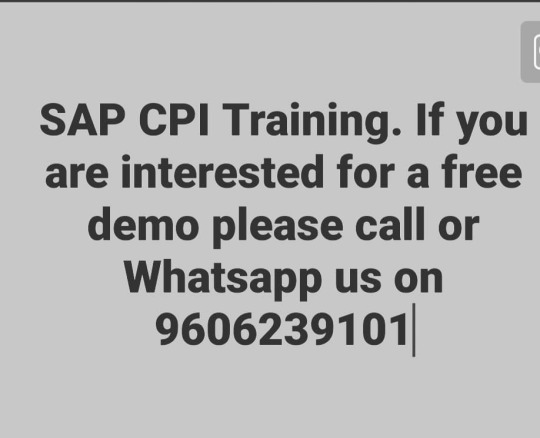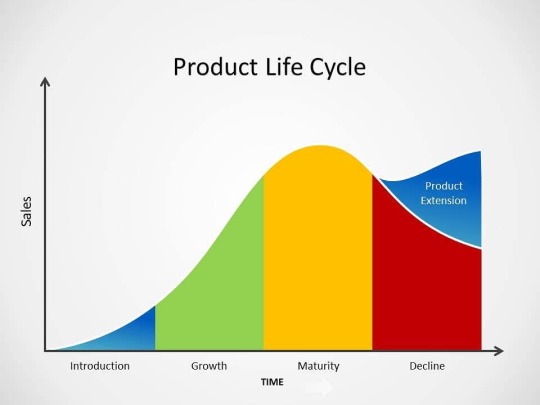#ProductLifecycleManagement
Explore tagged Tumblr posts
Text
Reducing E-Waste Through Smart Product Lifecycle Management

By managing every stage—from design to disposal—Product Lifecycle Management (PLM) helps businesses save time, cut costs, and improve product quality. A well-structured PLM strategy not only accelerates production but also promotes sustainability by minimizing e-waste.
3R Technology
8002 S 208th St E105, Kent, WA 98032
+12065827100
0 notes
Text
Adoption of Product Lifecycle Management (PLM) Solutions: Market Insights, Industry Impact
The global product lifecycle management market size is expected to reach USD 54.36 billion by 2030, expanding at a CAGR of 9.2% from 2023 to 2030, according to a new report by Grand View Research, Inc. Product lifecycle management is gradually advancing and witnessing continuous developments in the form of improved software capabilities. In addition to this, the demand for robust data analytics software platforms is also increasing and has been augmented by the evolution of core technologies such as blockchain, artificial intelligence, machine learning. Furthermore, the emergence of smart products and factories by small-scale enterprises is expected to open new avenues for the market players. These smart products have complex functionalities in terms of connectivity, security compliances, and others. Hence, the increasing demand for connected devices is anticipated to drive the growth of the product lifecycle management market over the forecast period.

Product Lifecycle Management Market Report Highlights
The design and engineering PLM software is extensively used by the manufacturing sector to manage designing, development, and engineering processes for continuous industrial digitization. For instance, Dassault Systèmes use CATIA, an engineering and design leading software for product, which is used to design, simulate, analyze, and manufacture products in various industries including aerospace, automotive, consumer goods, and industrial machinery
The automotive & transportation segment dominated the market with the highest revenue share of 23.6% in 2022. The increasing use of digital manufacturing and the rising integration of IoT in producing autonomous cars is one of the key trends expected to drive the automotive and transportation market during the forecast period
North America dominated the market with the largest revenue share of 35.4% in 2022, the region is continue dominating the market over the forecast period in line with the aggressive adoption of next-generation technologies, such as IoT, additive manufacturing, augmented reality, and telecommunications technologies, such as LTE and 5G
For More Details or Sample Copy please visit link @: Product Lifecycle Management Market Report
Over the past few years, the product lifecycle management market has been witnessing several new developments, particularly in the end-use sectors to increase transparency in supply chain & manufacturing processes. Product lifecycle management software has the potential to offer improved supply chain accuracy, lower lead times, and increase sales. For instance, in June 2021, Accenture, an Ireland-based company that provided professional services, acquired DI Square, a Japan-based IT company specialized in data analytics software, for firm’s consulting for product lifecycle management (PLM) and application lifecycle management (ALM) systems integration. This acquisition of DI Square will increase Accenture’s engineering expertise for the automotive and other manufacturing clients in Japan and other markets.
The growing need for the latest IT technologies, such as cloud computing, Artificial Intelligence (AI), big data, and communication technologies, such as 5G, is expected to open new opportunities for the adoption of product lifecycle management solutions in various end-use industries. Several large enterprises are already pursuing a cloud-first strategy for deploying their enterprise software and other systems. It has led to the amalgamation of interconnected devices, robots, and a quick knowledge network within a factory environment. Moreover, the PLM cloud deployments are mostly focused on non-conventional industries and small and medium enterprises. It allows the manufacturers to consolidate information about product development, streamline or change orders and requests, and improve communication with the suppliers. In addition to this, the increasing specialization in customer experience, rapid implementation times, and deeper integration capabilities are propelling the growth of the market over the forecast period.
List of Key Players in the Product Lifecycle Management Market
ANSYS, Inc
Aras
PTC Inc
Seimens
Oracle
SAP
Autodesk Inc.
Dassault Systèmes
Synopsys, Inc.
PTC
We have segmented the global product lifecycle management market based on component, deployment, end-use, and region.
#ProductLifecycleManagement#PLM#PLMMarket#PLMSolutions#LifecycleManagement#ProductDevelopment#AIinManufacturing#CloudPLM#SaaSPLM#DigitalTwin#IoT#Automation
0 notes
Text
Best Practices For Product Data Management In The Manufacturing Industry
In an increasingly competitive manufacturing landscape, effective Product Data Management is no longer optional; it's essential for survival and growth. By embracing PDM best practices, leveraging advanced technologies, and partnering with trusted experts like EnFuse Solutions India, manufacturers can unlock new levels of efficiency, innovation, and profitability in today's digital age.
#PDMBestPractices#DataGovernanceInManufacturing#PDMImplementationInProduction#ProductLifecycleManagement#PLM#QualityControlInPDM#PDMServices#EnFuseSolutions
0 notes
Text
Navigating Digital Transformation with Innovative Product Engineering
In today’s fast-paced market, staying ahead requires quick adaptation to ever-changing customer demands and industry trends. We revolutionize innovation through our Product Engineering Services, providing end-to-end software product development, modernization, and management solutions tailored for success. Utilizing advanced technologies, we specialize in comprehensive product development, ensuring flawless execution at every stage.
Our proficiency spans across software and hardware integration, IoT solutions, AI-powered applications, and more. We merge creativity with technical prowess, delivering products that not only meet but exceed client expectations.
Product Creation from ideation to launch, we manage the complete product lifecycle, guaranteeing flawless incorporation of specifications and prerequisites.
End to End Software Product Development | Csmart | Covalensedigital
0 notes
Text
3-in-1 Retail Technology Platform Surefront Releases Comprehensive Product Lifecycle Management (PLM) Guide

Surefront, a leading player in the retail industry, has recently launched the newest version of its Complete Guide to Product Lifecycle Management (PLM) Software. This guide is highly regarded for its comprehensive overview of PLM and its valuable insights on navigating the PLM solution market. Originally released in 2021 during the pandemic, it quickly became a go-to resource for retail and manufacturing executives who were looking to embrace new technologies. The guide covers a wide range of topics, including the different stages of PLM, the needs of retailers and suppliers, and provides valuable insights to help businesses overcome challenges in the product lifecycle.
Surefront's main goal is to support retail and manufacturing businesses in achieving success by sharing their knowledge and expertise. The guide specifically addresses common inefficiencies in the product lifecycle, such as outdated tools and trapped data. It emphasizes how implementing PLM software can streamline workflows, enhance collaboration, and improve the speed and quality of product delivery. By adopting a top-tier PLM solution, retailers can easily access data, collaborate effectively, and ultimately drive more sales and achieve better margins.
The guide is available for free download on Surefront's website. This is part of the company's commitment to sharing their expertise and alleviating the stress associated with researching and purchasing enterprise solutions. Surefront's platform combines PLM, PIM, and CRM solutions to streamline omni-channel sales, merchandising, and product development. By replacing outdated tools, it empowers teams to focus on their core tasks. If you want to learn more about Surefront and its solutions, you can visit their website at Surefront.com.
Read More - https://www.techdogs.com/tech-news/business-wire/3-in-1-retail-technology-platform-surefront-releases-comprehensive-product-lifecycle-management-plm-guide
0 notes
Photo

UbiNET Use Cases Imagine If The Way We Now Live Became Redundant Ari Abraham from Philosophie Group Inc. Santa Monica, California talks to Karl Smith, a consultant, and innovator who has said in the past “My desire was not to build things that humans already do but to find out how technology could evolve #AgileWorldInc #AgileTransformation #AgileFinOps #LeanPortfolioManagement https://agile-world.us/ubinet-use-cases-imagine-if-the-way-we-now-live-became-redundant/?utm_source=tumblr&utm_medium=%23AgileWorldInc&utm_campaign=%23AgileWorldInc
0 notes
Photo

I will always aim to lead with respect for people, culture & planet; continue to seek knowledge & flexibility in organization & process; and am committed to the balance of innovation & sustainability. . . . . . .
#creativedirector#digitalmerchandisingexecutive#productlifecyclemanagement#merchandisingexecutive#brandstrategy#LosAngeles#NYC#globalmerchandising#Florida#adaptablemerchandier#productdirector#contentstudio#fashion#merchandsing#digitalmerchandising#FIT#contentcreation#newyorkcity#contentcollectivestudio#creative#digital#dualcitizen#London#content#FashionInstituteofTechnology#textiles#strategist
2 notes
·
View notes
Text
Product Lifecycle Management
PLM helps to get your product to reach your target audience more efficiently and effectively. It integrates people, data, processes, and business systems to support product innovation, reduce time-to-market, and improve product quality and sustainability
📈.PLM comprises four phases that include: 1. Development/Introduction 2. Growth 3. Maturity/Stability 4. Decline

#productlifecyclemanagement#innovationwithPLM streamline productdevelopment optimzeproductlifecycle revolutionizeproductmanagement plmchallenge plmsuccess
0 notes
Photo

Product lifecycle management software is an important principle that not only means providing the right infrastructure for the business, but also improving product quality to achieve maximum consumer satisfaction. If your business is looking to develop manufacturing skills, design better products, and develop product life cycle management strategies to increase overall revenue, and achieve customer satisfaction, then take a look at the 7 best product lifecycle management of 2021. Link in bio for the article. #braysbod #braysbodblog #productlifecycle #productmanagement #productlifecyclemanagement #productmanagers #softwaredevelopers https://www.instagram.com/p/CiDG5IcoDMa/?igshid=NGJjMDIxMWI=
#braysbod#braysbodblog#productlifecycle#productmanagement#productlifecyclemanagement#productmanagers#softwaredevelopers
1 note
·
View note
Text

PLM software is an answer that deals with the entirety of the data and cycles at each progression of an item or service lifecycle across globalized supply chains. This incorporates the information from things, parts, items, reports, prerequisites, designing change requests, and quality work processes.
#plmoncloud#cloudplm#cloudproductlifecyclemanagement#productlifecyclemanagement#plmsystem#productlifecyclemanagementsystem#productlifecyclestages
0 notes
Text
Product Lifecycle Management: Optimizing Efficiency from Start to Finish

Product Lifecycle Management (PLM) is a strategic approach to managing a product’s entire journey—from concept and design to production, distribution, and eventual retirement. Businesses use PLM to streamline operations, reduce costs, and improve collaboration across departments.
Key Stages of Product Lifecycle Management
Concept & Design
Companies begin by identifying market needs, researching trends, and creating product designs. PLM software helps teams collaborate, ensuring efficient development with fewer errors.
Development & Testing
Prototypes are built and tested for performance, safety, and compliance. PLM tools centralize data, making it easier to refine designs and manage regulatory requirements.
Production & Launch
Once finalized, the product moves into manufacturing. PLM systems optimize supply chain management, track materials, and ensure quality control, leading to efficient production and timely launches.
Marketing & Sales
A well-managed PLM strategy integrates marketing efforts with product data, ensuring accurate information reaches sales teams and customers.
Service & Maintenance
After launch, businesses use PLM to manage repairs, updates, and recalls, improving customer satisfaction and extending product longevity.
End-of-Life & Disposal
PLM also handles product discontinuation, including sustainable disposal and recycling strategies to reduce environmental impact.
Benefits of Implementing PLM
Improved Collaboration: Teams across design, engineering, and production work seamlessly with centralized data.
Cost Reduction: Identifying inefficiencies early minimizes rework, material waste or e-waste, and delays.
Faster Time-to-Market: Streamlining development and production speeds up product launches.
Regulatory Compliance: Ensures adherence to industry standards and legal requirements.
Enhanced Product Quality: Continuous tracking and improvements lead to better-performing products.
Why Product Lifecycle Management Matters
Product Lifecycle Management is essential for businesses looking to stay competitive in today’s fast-paced market. By integrating PLM systems, companies can optimize efficiency, cut costs, and deliver high-quality products while ensuring long-term sustainability.
3R Technology
8002 S 208th St E105, Kent, WA 98032
+12065827100
#e-waste recycling#electronicrecycling#datadestruction#secure data destruction#e waste recycling#data sanitization#collection bin program#productlifecyclemanagement
0 notes
Text
What is PLM service?

PLM or product lifecycle management (PLM) services consists of plan, implementation, managing and optimize services across different PLM software applications. The PLM software applications covered include Autodesk, Dassault Systems, Oracle, PTC, SAP, and Siemens.
Check Out Our Research on PLM Service
#plmservice#productlifecyclemanagement#plmsoftware#eiirpublications#eiirtrend#eiirproviders#plmservicesproviders
1 note
·
View note
Photo

We are going to start SAP EHS & EHSM Online training batch from Monday. Interested people please call or WhatsApp us on 9606239101 for demo session. Mail: [email protected] #sap #ehs #ehsm #environment #health #saftey #safteyofficer #plm #onlinetraining #training #online #productlifecyclemanagement #plm #pm #plantmaintenance (at Bengaluru,Karnataka) https://www.instagram.com/p/CJSIJUZhzyl/?igshid=12rqblhd9rv3
#sap#ehs#ehsm#environment#health#saftey#safteyofficer#plm#onlinetraining#training#online#productlifecyclemanagement#pm#plantmaintenance
1 note
·
View note
Photo

Every product follows a certain life cycle pattern. Whether the pattern is a S-shaped curve or modified ones like the variants, a product manager needs to understand the relevance of a PLC concept. Generally products have a perishable distinctiveness. This means that a new product degenerates over the years into a common commodity. The process by which this distinctiveness gradually disappears and the product merges with the other competitive products is termed cycle of competitive degeneration. Follow @ashishvalvi007 #productmanagement #brandmanagement #productlifecycle #productlifecyclemanagement #introduction #growth #maturity #decline #brandmanager #productmanager #productdevelopment #productmanagement101 #productmanagementtips #brandmanagementexcellence #productmanagementlife #productpositioning #marketing101 #lifecycle #brandsales #brandpositioning (at Dhulia, Maharashtra, India) https://www.instagram.com/p/CIlUR2ng1b9/?igshid=3ecq3jejrcs
#productmanagement#brandmanagement#productlifecycle#productlifecyclemanagement#introduction#growth#maturity#decline#brandmanager#productmanager#productdevelopment#productmanagement101#productmanagementtips#brandmanagementexcellence#productmanagementlife#productpositioning#marketing101#lifecycle#brandsales#brandpositioning
0 notes
Photo

UbiNET Use Cases Imagine If The Way We Now Live Became Redundant Ari Abraham from Philosophie Group Inc. Santa Monica, California talks to Karl Smith, a consultant, and innovator who has said in the past “My desire was not to build things that humans already do but to find out how technology could evolve #AgileWorldInc #AgileTransformation #AgileFinOps #LeanPortfolioManagement https://agile-world.us/ubinet-use-cases-imagine-if-the-way-we-now-live-became-redundant/?utm_source=tumblr&utm_medium=%23AgileWorldInc&utm_campaign=%23AgileWorldInc
0 notes
Link
Software-as-a-service product lifecycle management (SaaS PLM) solutions with project management capabilities offer safe access to product information and tasks anywhere in the world, including for workers working from home. Learn more about how a company can keep its projects on track and on time.
1 note
·
View note